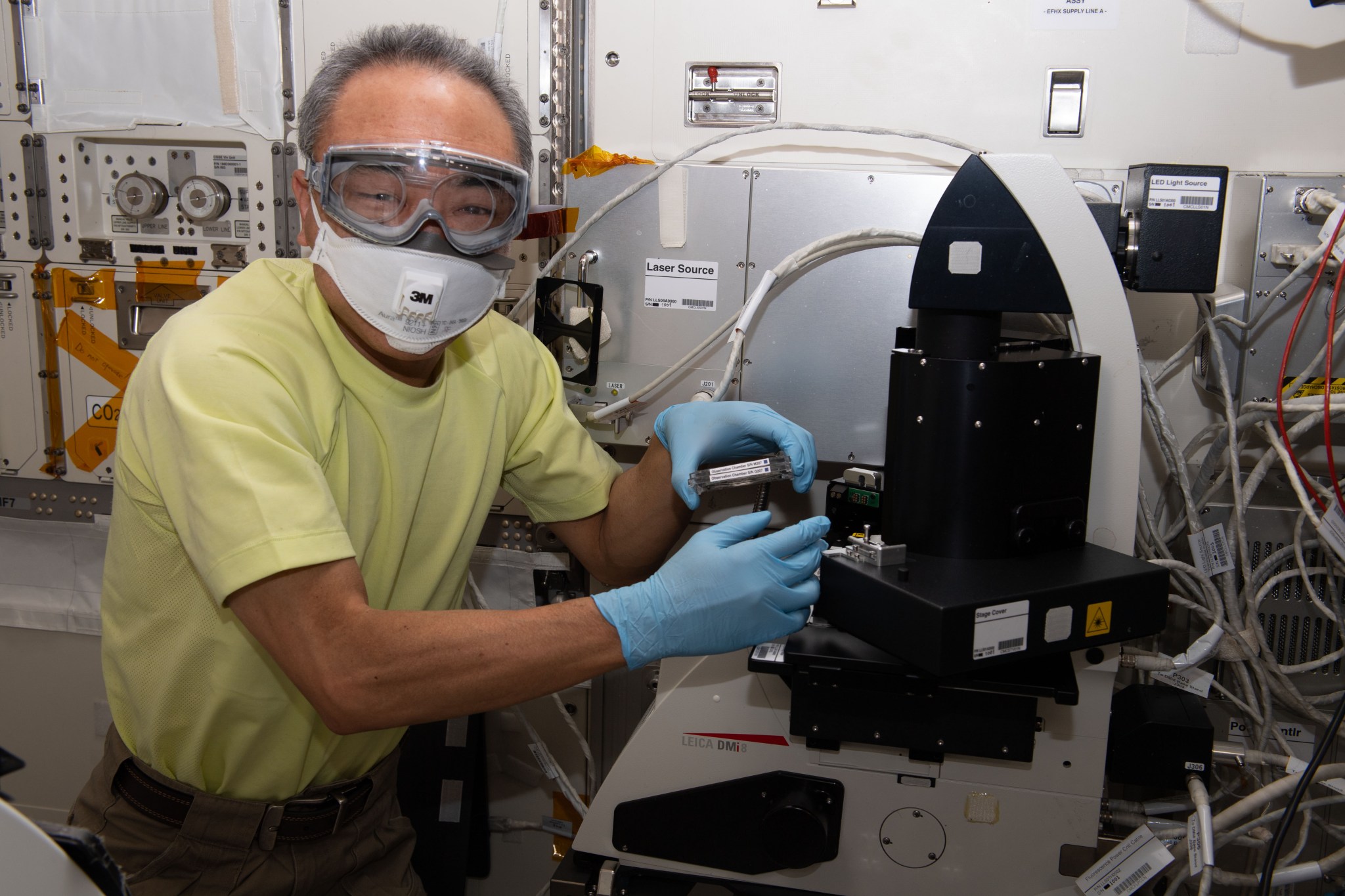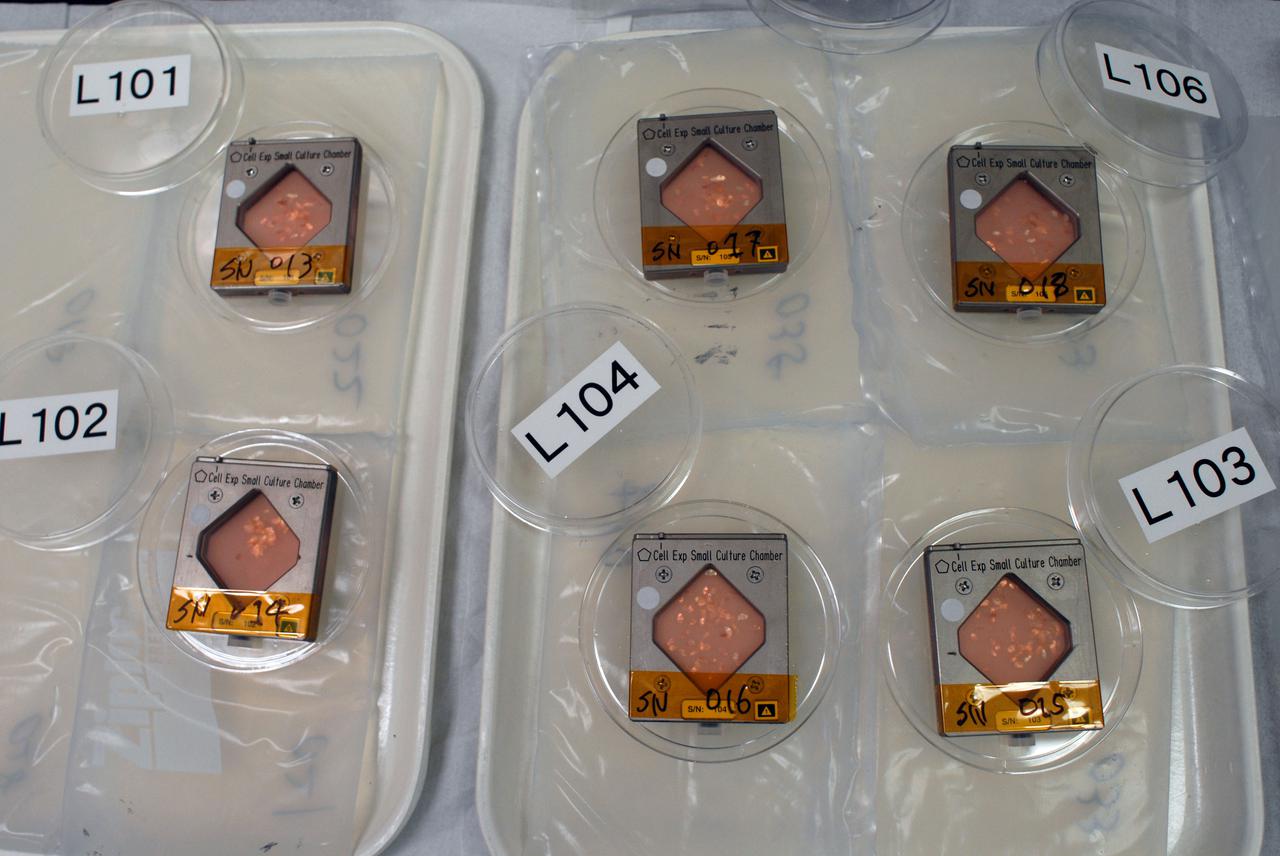
Science in Space August 2025
Cells are the basic building blocks of all living things, from single-celled bacteria to plants and animals containing vast numbers of them. Cells have adapted for a wide variety of settings and functions. Nerve cells in humans and animals, for example, have long, thin extensions that rapidly transmit signals, while rigid, blocky cells support the structure of plants.
Cell biology is the study of cell structure, function, and behavior. For humans, scientists in this field explore the mechanisms of diseases from bone loss to cancer and work on developing treatments.
Cell-based experiments on The International Space Station help identify how spaceflight affects people and other living systems, with applications for future space exploration and life on Earth.

Recent experiments have revealed that individual animal cells react to the effects of gravity, but how they do so is largely unknown. Cell Gravisensing, an investigation from JAXA (Japan Aerospace Exploration Agency), examines the molecular mechanism behind the ability of cells to sense gravity. Results could support development of drugs to treat muscle atrophy and osteoporosis in space and on Earth.
Cardiovascular cells

In microgravity, some astronauts experience changes in their cardiovascular system, including reduced blood volume and diminished cardiac output. An earlier investigation, STaARS Bioscience-3, examined the mechanisms behind these changes at the cellular and genetic level. The research revealed that, after only three days of spaceflight, there were changes in the expression of more than 11,000 genes in blood vessel cells that could alter their functions. The results laid the groundwork for additional research into cell response to spaceflight that could help protect the health of crew members on future missions and people with cardiovascular diseases on Earth.
Neural cells
STaARS BioScience-4 examined microgravity's effects on neural stem cells that give rise to central nervous system cells. Researchers found changes in production and consumption of energy and increased breakdown of cellular components in these cells, responses that likely enhance adaptation to microgravity. The finding also highlights the importance of providing astronauts with sufficient energy for cognitive and physiological function on future missions.
Fish cells

Goldfish scales have many of the same proteins, minerals, and cell types as the bones of mammals. The JAXA Fish Scales investigation analyzed goldfish scales exposed to three times Earth's gravity, simulated microgravity, and microgravity on orbit. Researchers determined that goldfish scales can be used as a model to help them understand how human bones respond to spaceflight.
Mouse cells
Research with model organisms like rodents has relevance to humans in space and makes significant contributions to understanding human aging, disease, and the effects of microgravity on biological and physical processes. JAXA's Stem Cells studied how spaceflight affected the DNA and chromosomes of embryonic mouse stem cells, and their ability to develop into adult mice after return to Earth.
Researchers analyzed unaltered cells and cells given a mutation to increase responsiveness to radiation. They found no chromosomal differences between the unaltered space-flown cells and ground controls, but the mutated cells had more DNA abnormalities. The work could enhance the understanding of radiation effects on human cancer and improve risk assessment for long-duration missions to the Moon and Mars.

Another study used tissue samples from RR-1, which are available through NASA's GeneLab open data repository. Analysis showed that the heart can adapt to the stress of spaceflight in just 30 days. The researchers observed genetic changes suggesting that this adaptation may facilitate survival in space and could have applications in treating heart disease in space and on Earth.






